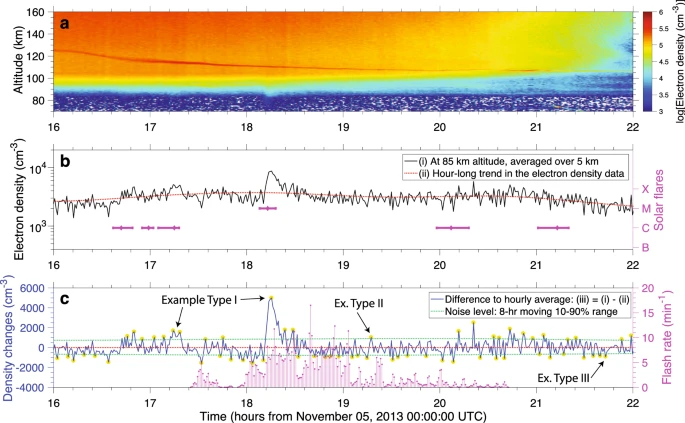Science Daily June 14, 2021
A team of researchers in the US (New Mexico Tech, University of Central Florida) working with data collected by the Incoherent Scatter Radar (ISR) at the Arecibo Observatory, satellites, and lightning detectors in Puerto Rico, have for the first time examined the simultaneous impacts of thunderstorms and solar flares on the ionospheric D-region. One of the key things they showed in the paper is that lightning- and solar flare-driven signatures are completely different. The first tends to deplete electron density depletions, while the second enhances. They determined that solar flares and lightning from thunderstorms trigger unique changes to that edge of space, which is used for long-range communications such as GPS found in vehicles and airplanes. Better understanding the impact on the Earth’s ionosphere will help improve communications…read more. Open Access TECHNICAL ARTICLE

Ionospheric electron density recorded on November 05, 2013. Credit: Scientific Reports volume 11, Article number: 10250 (2021)